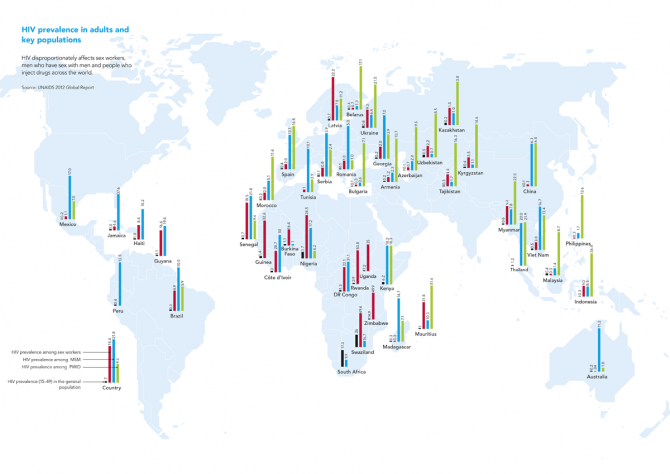HIV disproportionately affects sex workers, men who have sex with men and people who inject drugs across the world. Source: UNAIDS 2012 Global Report

Printable version
Document
20121120_results_HIVprevalence_en.pdf
(48.08 KB)
